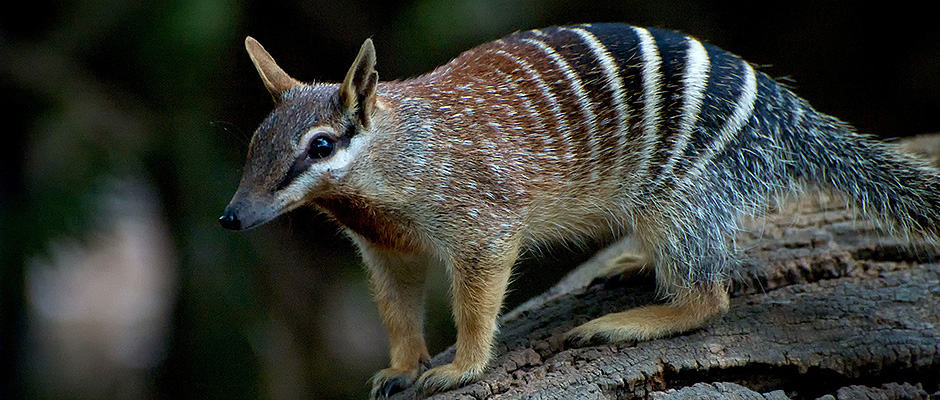Share this article
Captive Marsupials Released into the Wild
Perth Zoo recently released 14 zoo-born numbats (Myrmecobius fasciatus), also called banded anteaters, into Dryandra Woodland in Western Australia as part of an ongoing effort to bolster wild populations of the endangered marsupial that’s found only in Australia. Thus far, Perth Zoo, which has the world’s only breeding center for numbats, in collaboration with Western Australia’s Department of Parks and Wildlife has reared 195 numbats through its breeding program. Those numbats will eventually help establish new populations and support already existing wild populations.
Habitat loss in addition to predation from birds of prey, carpet pythons, foxes, and cats have reduced the number of numbats to fewer than 1,000 individuals. “The breeding program is critical to increasing numbers and getting populations out there. It’s one of the only options that we have,” said Dani Jose, a keeper and numbat researcher at the Perth Zoo. “It has to be done that way or they’d be gone.”
Many zoo breeding programs for threatened or endangered species try to help by maintaining or increasing the size and genetic diversity of populations, according to the American Zoological Association. In fact, the Smithsonian Conservation Biology Institute in the United States credits captive breeding programs for saving Guam rails (Hypotaenidia owstoni), black-footed ferrets (Mustela nigripes), California condors (Gymnogyps californianus), Przewalski’s horses (Equus ferus), scimitar-horned oryx (Oryx dammah), Partula snails, and Spix’s macaws (Cyanopsitta spixii) among others from extinction.
Occasionally, a breeding program’s ultimate objective will be to release or reintroduce animals into their original habitat or, in some cases, new ranges in the wild. For example, the Toldedo Zoo in 1998 and Detroit Zoo in 2005 began breeding federally endangered Karner Blue Butterflies for release into the wild, while a group of organizations such as U.S. Fish and Wildlife Service and Ohio State University has worked to reintroduce and establish populations of federally listed freshwater mussel species into the Ohio stream and rivers. Similarly, in 1984, the Smithsonian’s National Zoo began reintroducing zoo-born golden lion tamarins to their natural habitats into Brazil rainforests, and, by 2003, the International Union for Conservation of Nature (IUCN) downlisted the species from critically endangered to endangered.
The released numbats have been fitted with radio collars, and the Department of Parks and Wildlife will track their movements and monitor females to see if they breed.
Header Image: Image Credit: Helenabella








